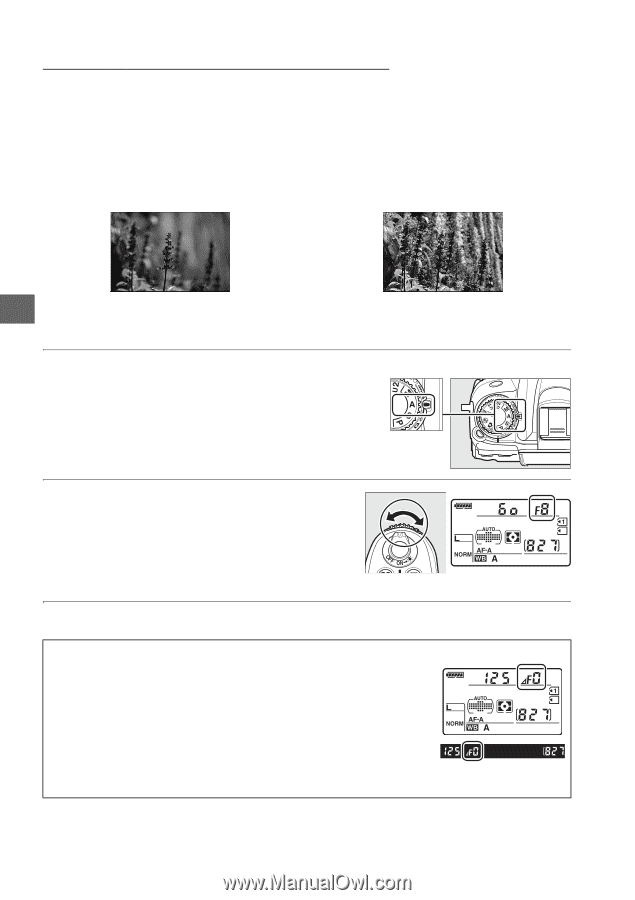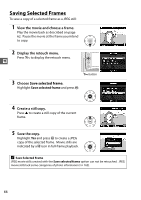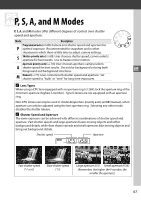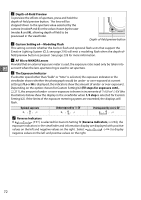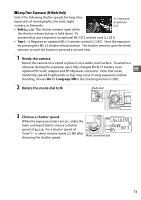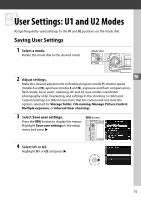Nikon D7000 D7000 User's Manual - Page 90
Mode A (Aperture-Priority Auto), Non-CPU Lenses
 |
UPC - 018208254743
View all Nikon D7000 manuals
Add to My Manuals
Save this manual to your list of manuals |
Page 90 highlights
Mode A (Aperture-Priority Auto) In aperture-priority auto, you choose the aperture while the camera automatically selects the shutter speed that will produce the optimal exposure. Large apertures (low f-numbers) reduce depth of field, blurring objects behind and in front of the main subject. Small apertures (high f-numbers) increase depth of field, bringing out details in the background and foreground. Short field depths are generally used in portraits to blur background details, long field depths in landscape photographs to bring the foreground and background into focus. # Large aperture (f/2.8) To take photographs in aperture-priority auto: 1 Rotate the mode dial to A. Small aperture (f/36) Mode dial 2 Choose an aperture. While the exposure meters are on, rotate the sub-command dial to choose the desired aperture from values between the minimum and maximum for the lens. Sub-command dial 3 Frame a photograph, focus, and shoot. A Non-CPU Lenses (0 270) Use the lens aperture ring to adjust aperture. If the maximum aperture of the lens has been specified using the Non-CPU lens data item in setup menu (0 159) when a non-CPU lens is attached, the current f-number will be displayed in the viewfinder and control panel, rounded to the nearest full stop. Otherwise the aperture displays will show only the number of stops (F, with maximum aperture displayed as FA) and the f-number must be read from the lens aperture ring. 70
